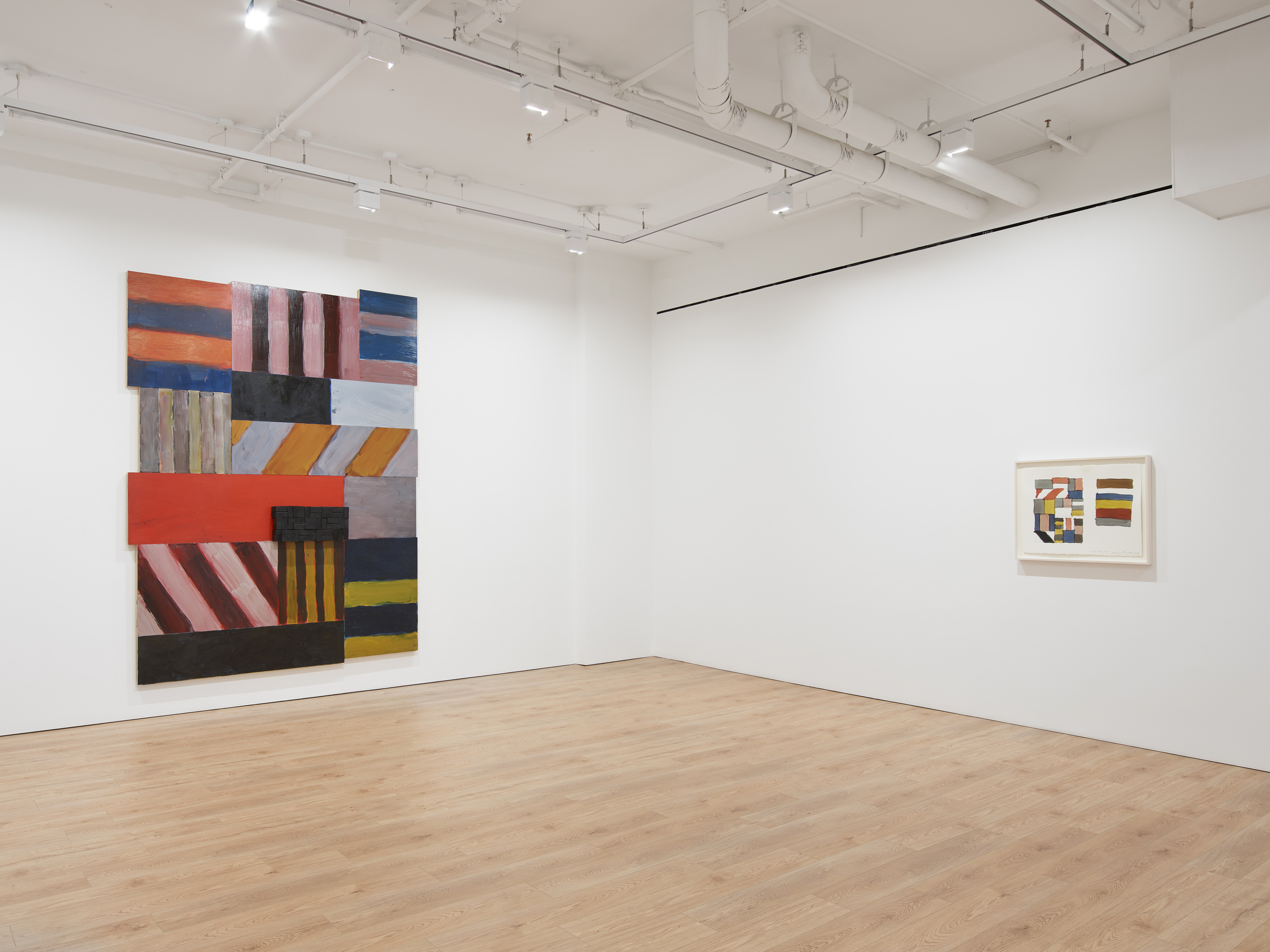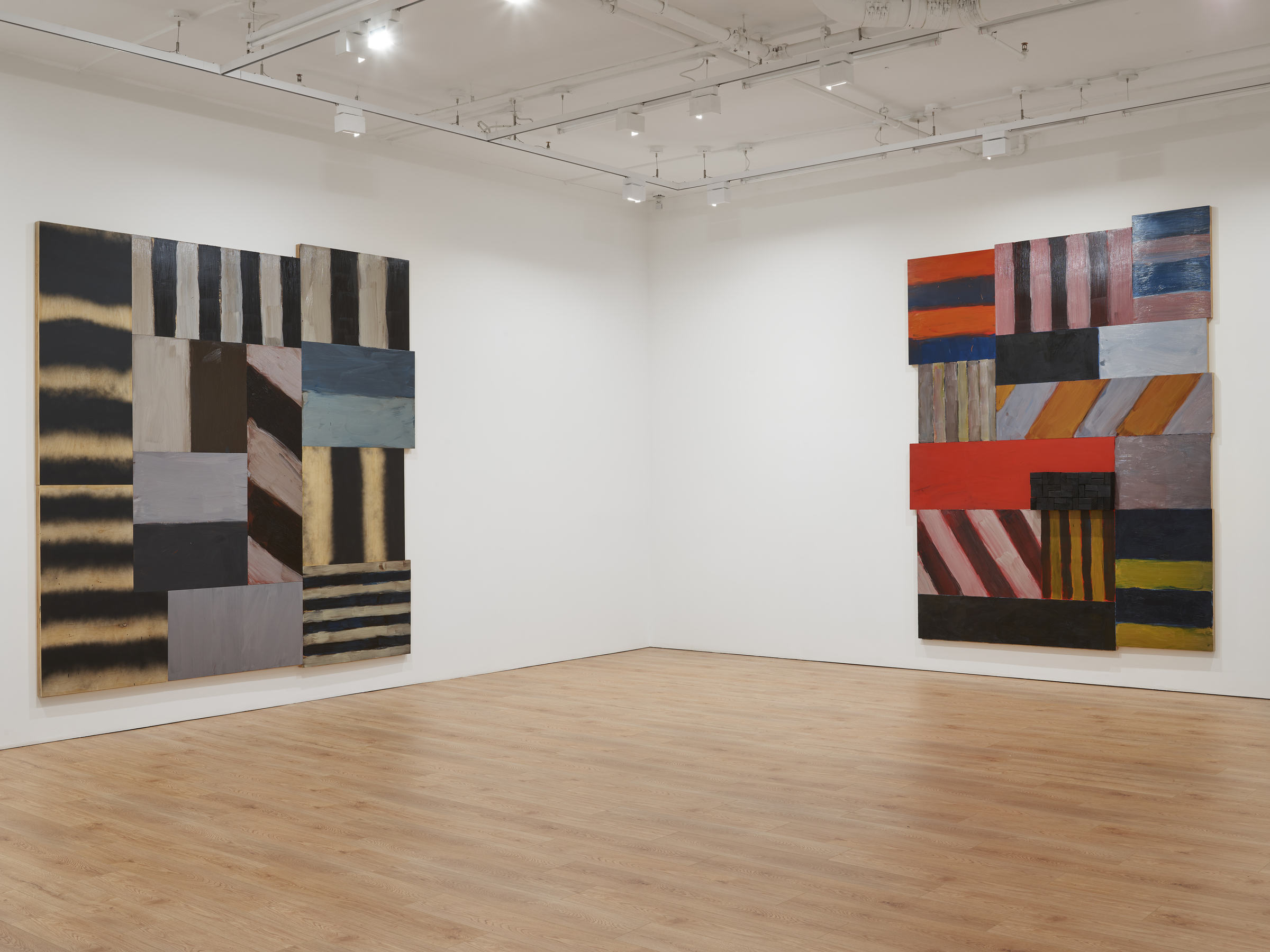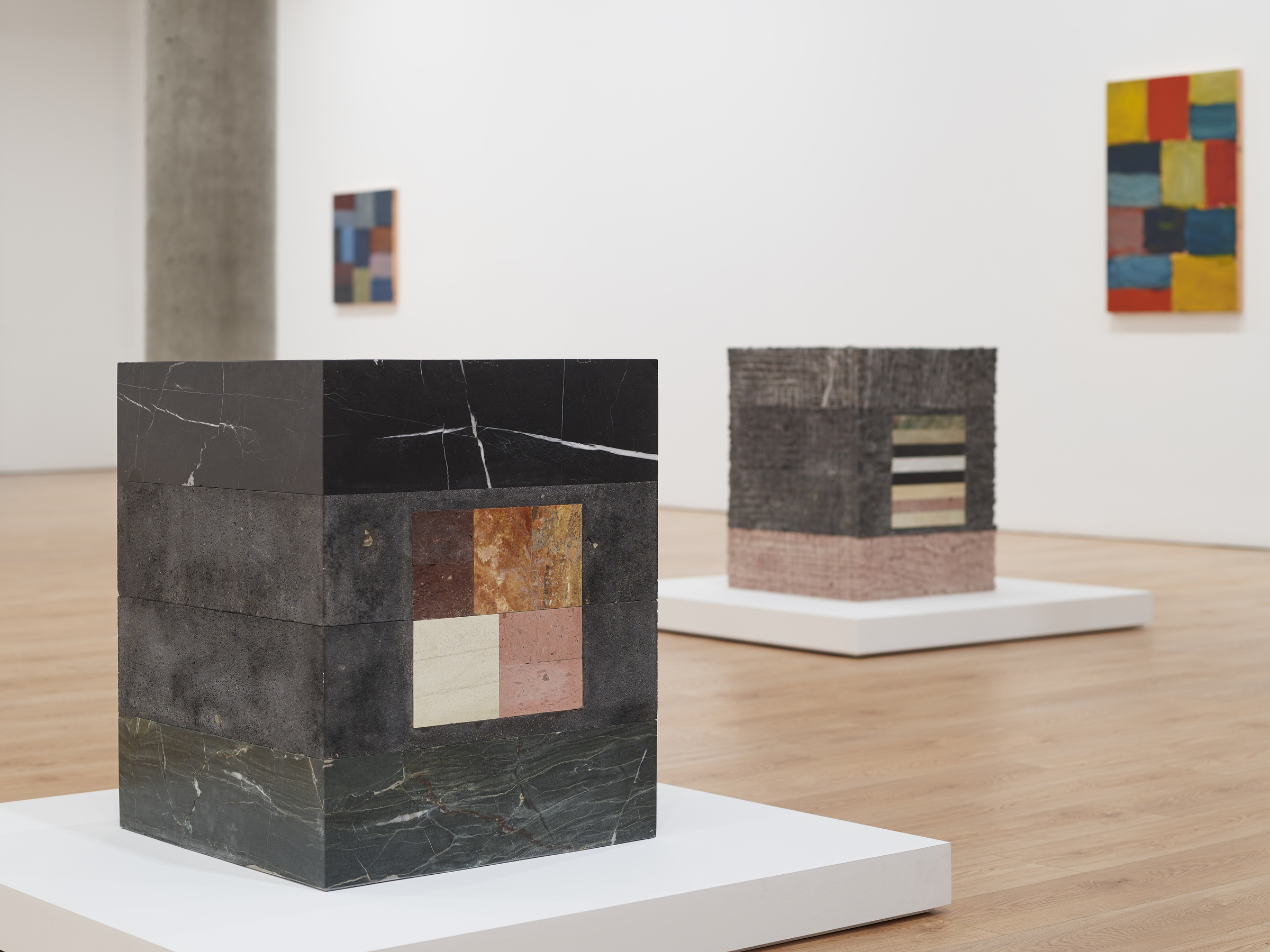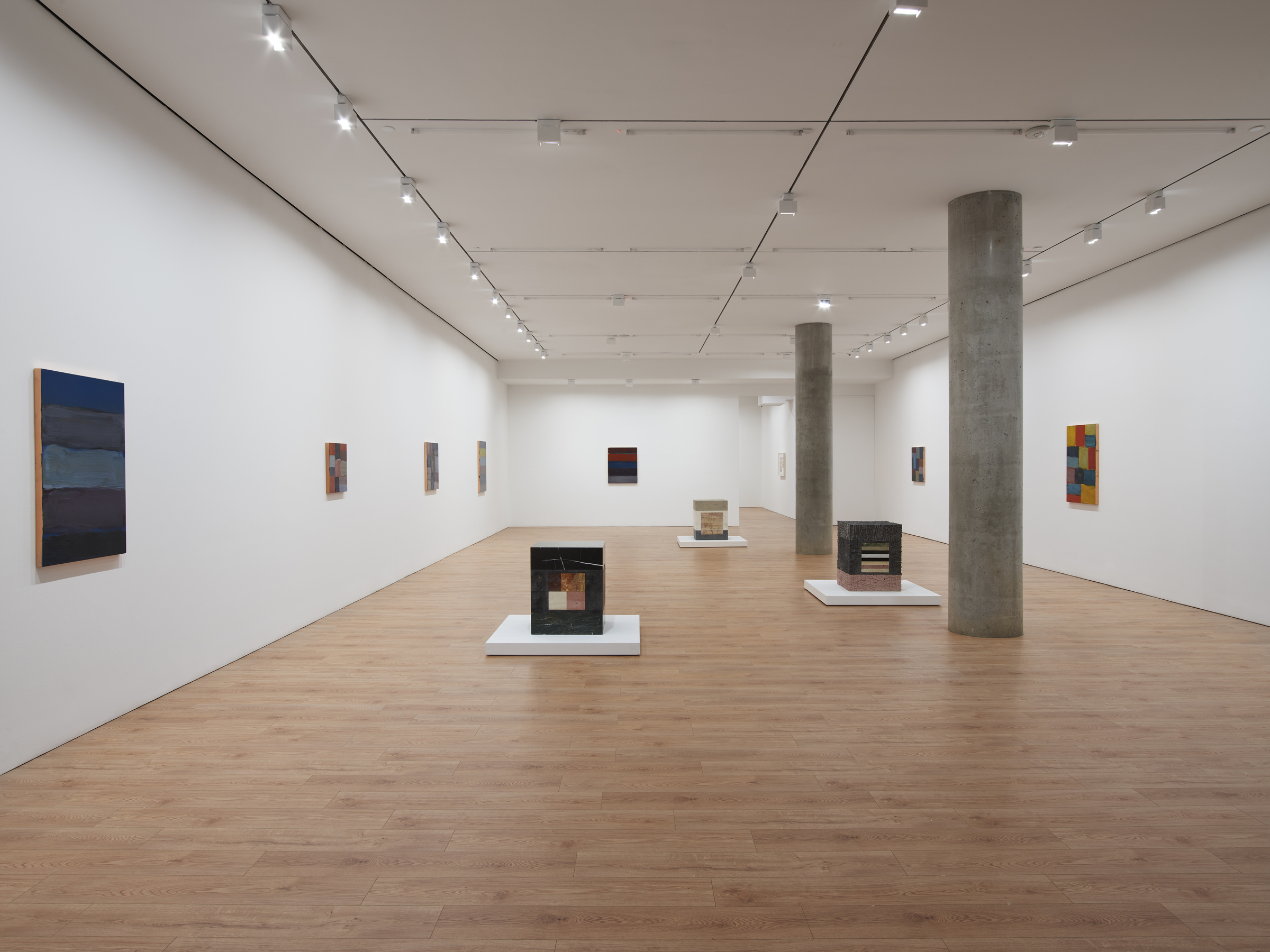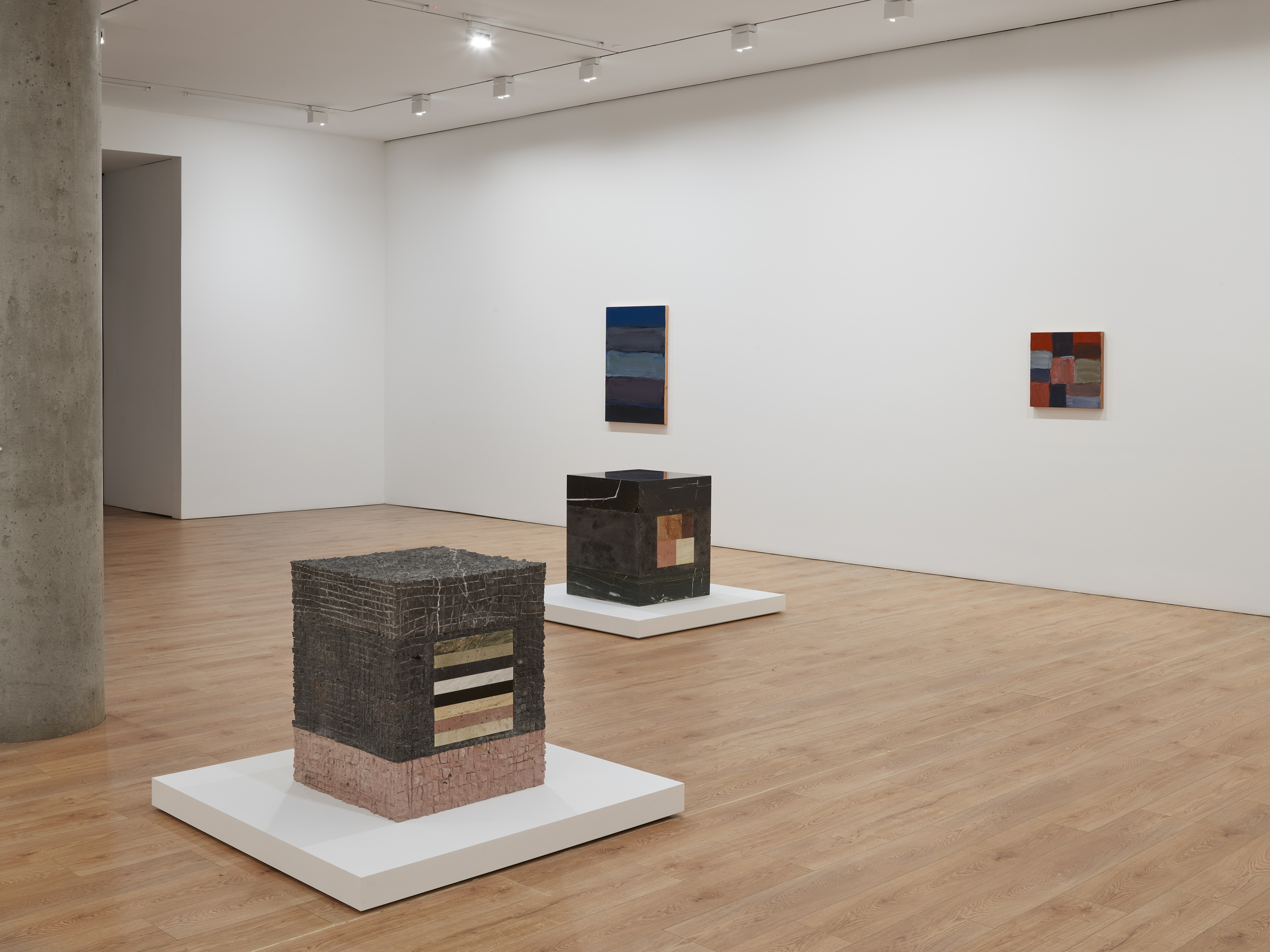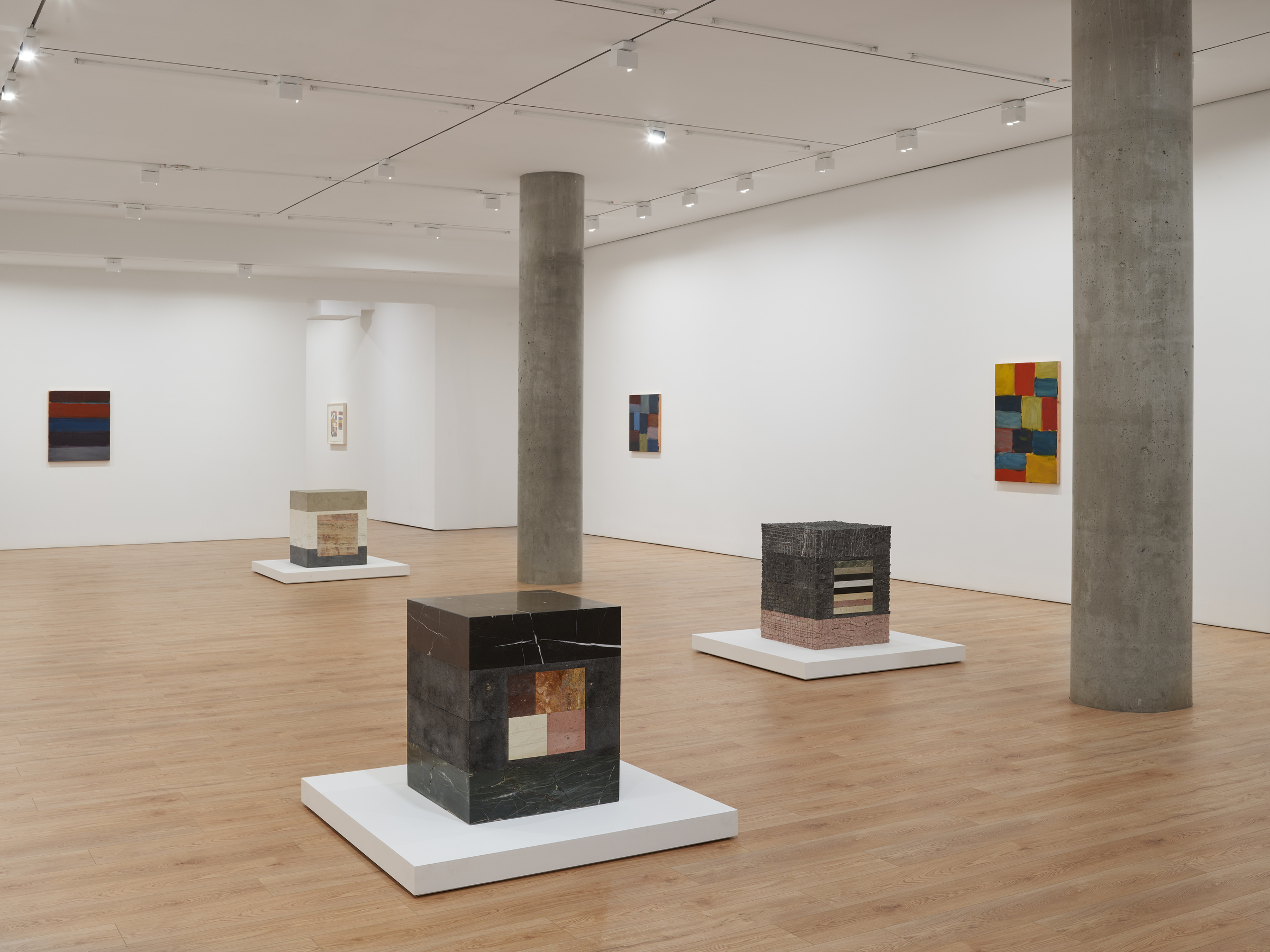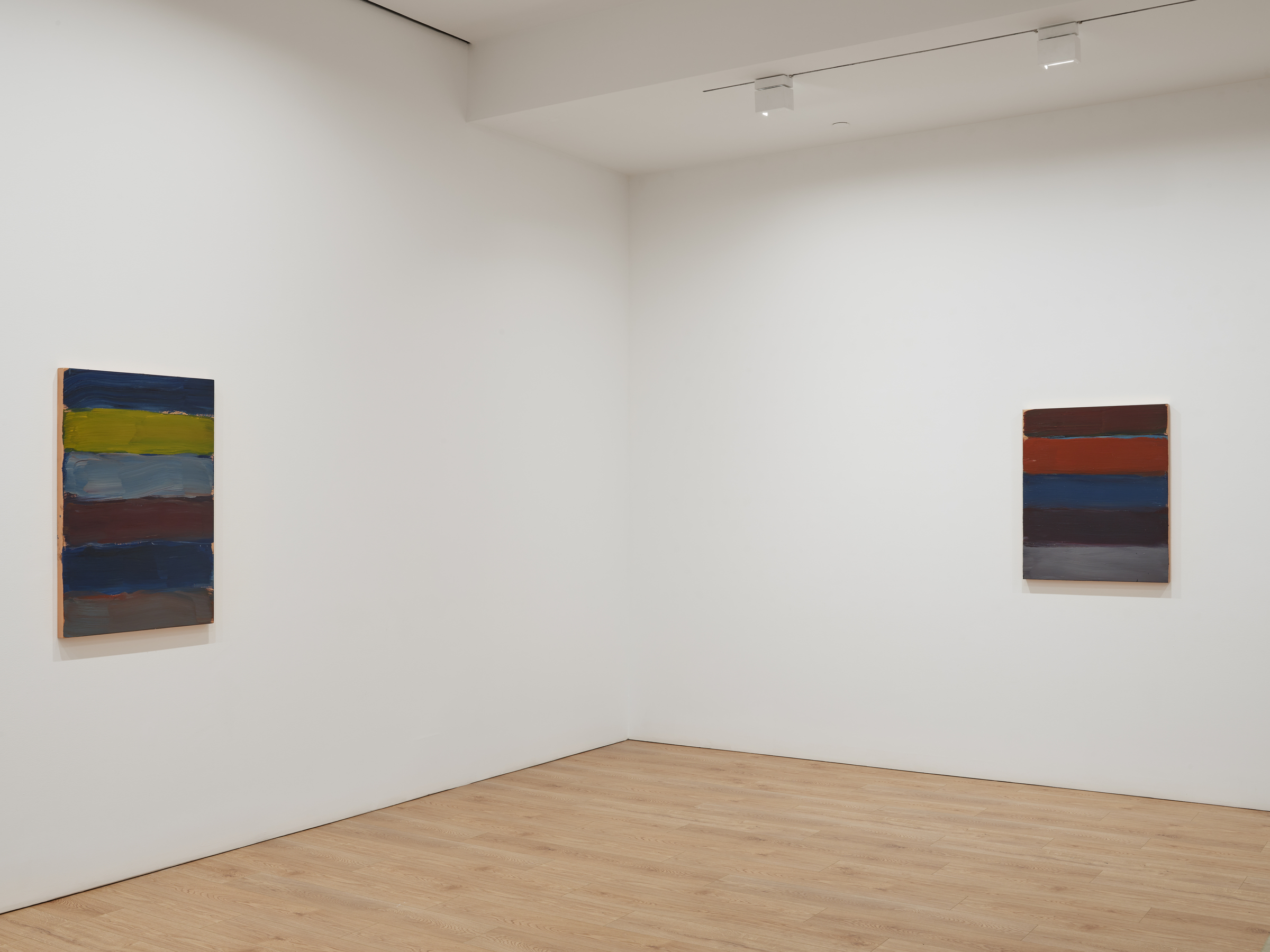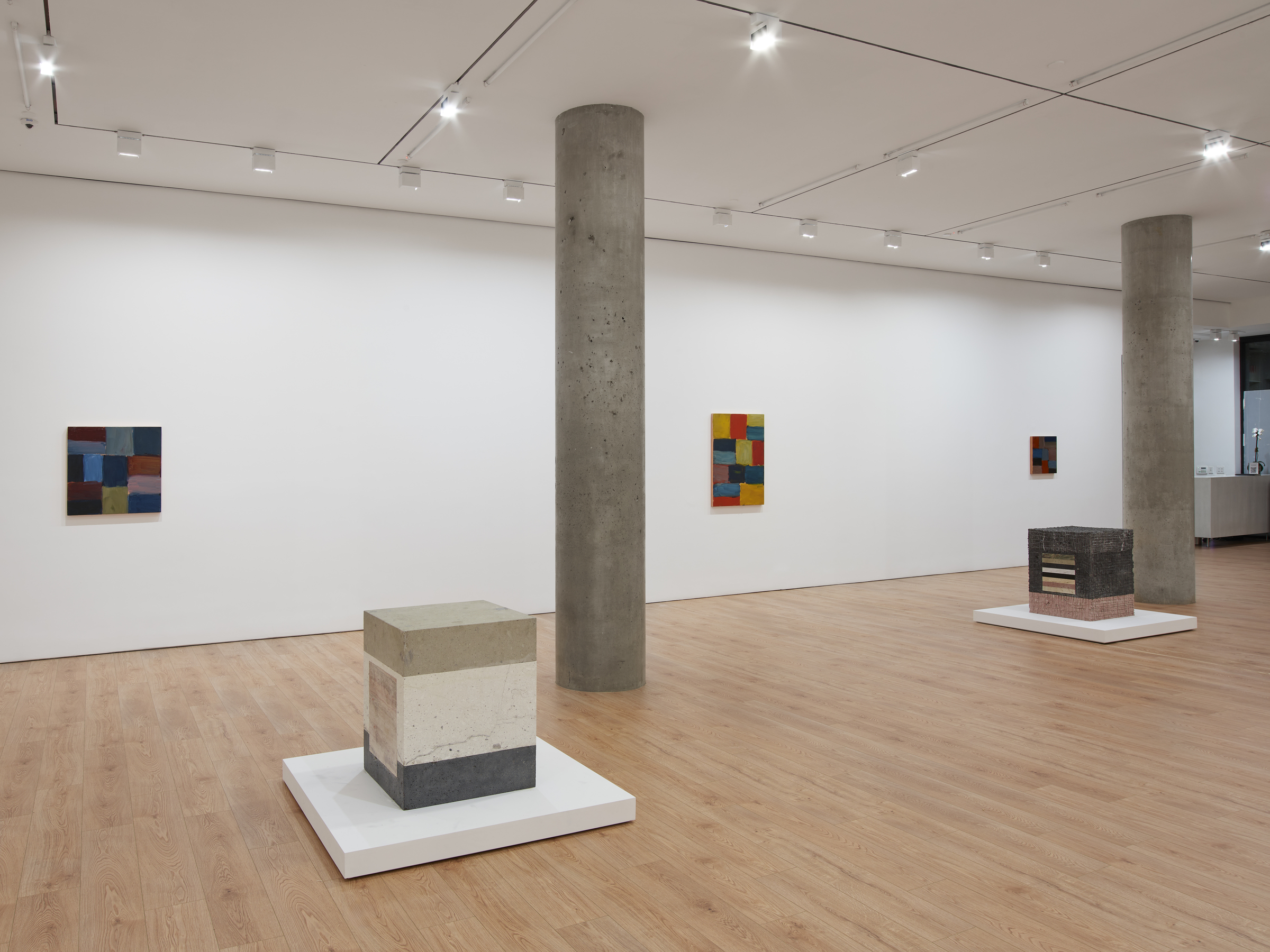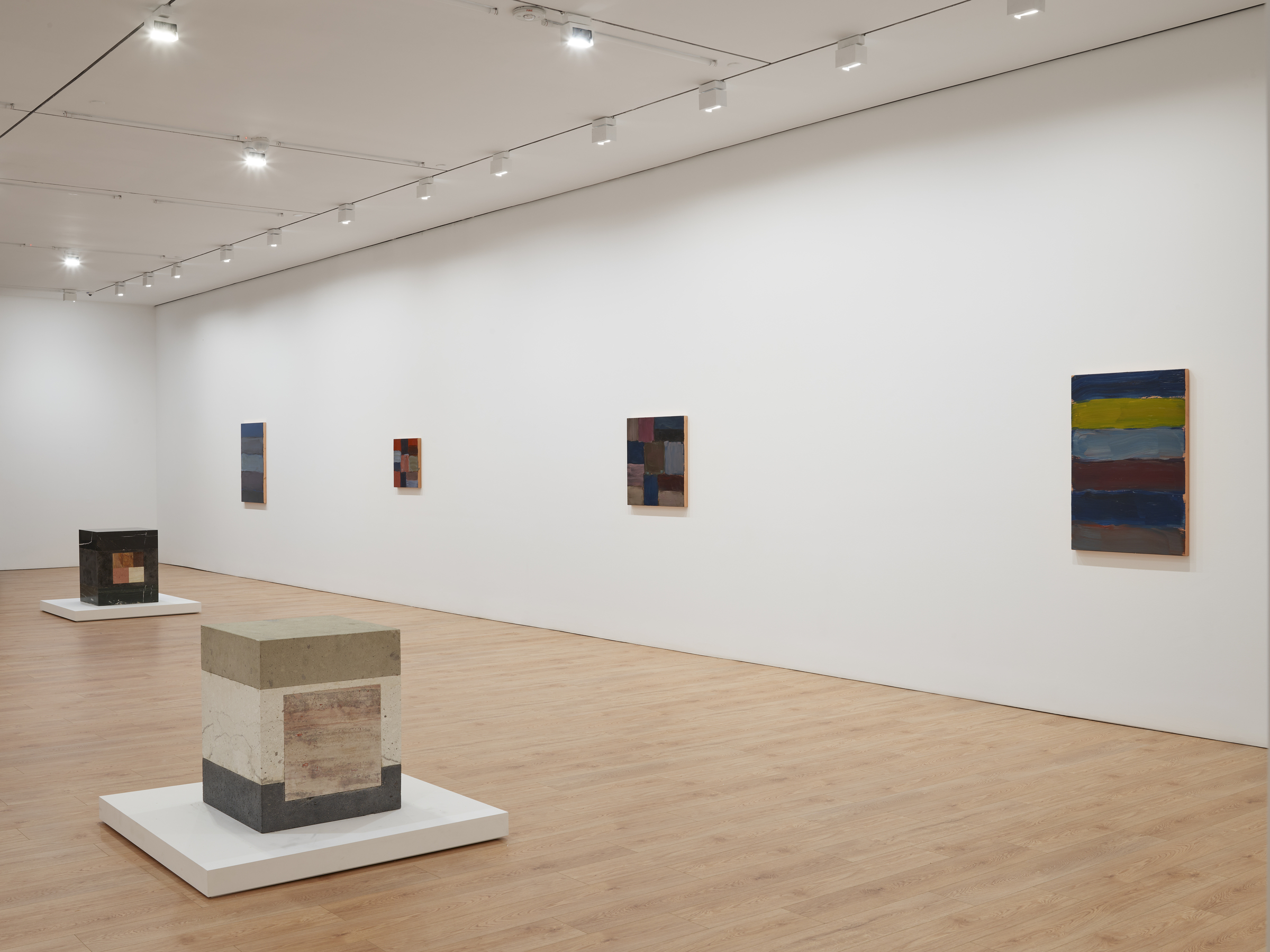Lisson Gallery is pleased to present Tower, a solo exhibition by renowned painter Sean Scully featuring three interrelated bodies of work. The eponymous new series of Tower paintings represents a radical departure and a bold dismantling of his practice, each being formed from a concatenation of smaller, individual panels, seemingly employing different styles and diverse moments from his own painterly back catalogue. Through the disorder and disjuncture of these tessellating panels, incorporating gaps, overlaps and holes, comes a newfound harmony and rhythm, that also references an earlier, spiritual era of art – such as the perspectival depth and world building found in Quattrocento Italy – as well as the rupture of modern art – in Analytic Cubism or Lucio Fontana’s pierced surfaces, for example.
Read moreAssembled from wood, felt and aluminum, the Tower works are inherently sculptural, featuring graffiti-esque spray paint, competing grids and flashes of road signs, which bring to mind the tumult of our high-rise, built environment. Through Scully’s complex amalgamation of cohesion and fracture, the Tower paintings carry an allegorical force, conveying echoes of ambitious structures like the World Trade Center and the Tower of Babel, and suggesting the gulf between demise and reconstruction. In parallel to the exhibition, seven additional new works from the Tower series are on view at Scully’s studio space, with viewings available by appointment.
A further series of paintings contrasts the monumental with the intimate, while a trio of stone sculptures acts as a pivot between the two. Across the display, Scully re-examines concepts that have shaped his five-decade career – the relationship between form and feeling, the emotive potential of abstraction, and the pitting of romantic ‘gesture’ against an aesthetic of impersonality.
In eight paintings on copper, Scully has arranged gestural sweeps of jostling color into tiered bands and tentative grids, suggestive of both turbulence and containment. The metallic surface is both redolent of industry and the earth, because, as Scully points out, “The paintings have a relationship with the elemental world.” As with the holes in the Tower series, here tiny breaks in the paintwork allow the copper support to shine through, functioning as a kind of underpainting or underpinning. Conjuring allusions from copperplate etchings to medieval icon painting, the pigment-veiled metal enhances the metaphoric power and surface strength of each piece.
Since his Supergrid acrylic paintings of the 1970s, rectilinear and grid structures have been a near-constant in Scully’s art. He has often observed that his work combines the rigor of Modernist abstraction with the pathos of historical European painting. In three free-standing sculptures, these twin currents are translated into compact, lapidary form. Planed blocks of stone fit together in cuboid stacks. Belying the minimalist precision of the construction, the stone itself is a subtle index of ‘real life.’
The sculptures, with their scale and rectilinear precision, form a grounding counterpoint to the loftier paintings. Yet in the Tower series, it is also possible to perceive an emotive undertow—one found throughout Scully’s art and arguably linked to his Irish heritage, birth into homelessness, and upbringing in South London. As ever in his art, the personal and the autobiographic glimmer within the apparently systematic.
